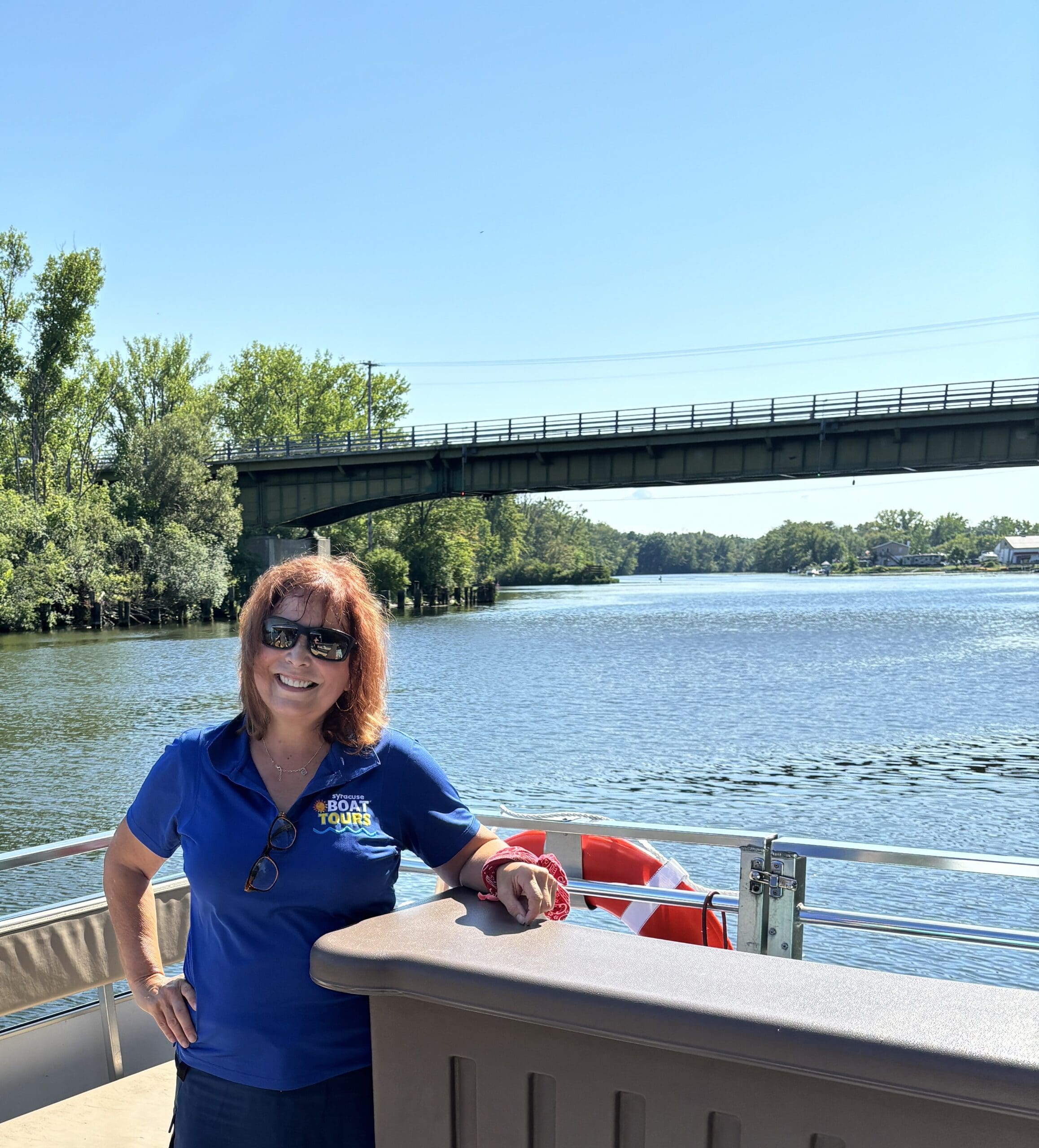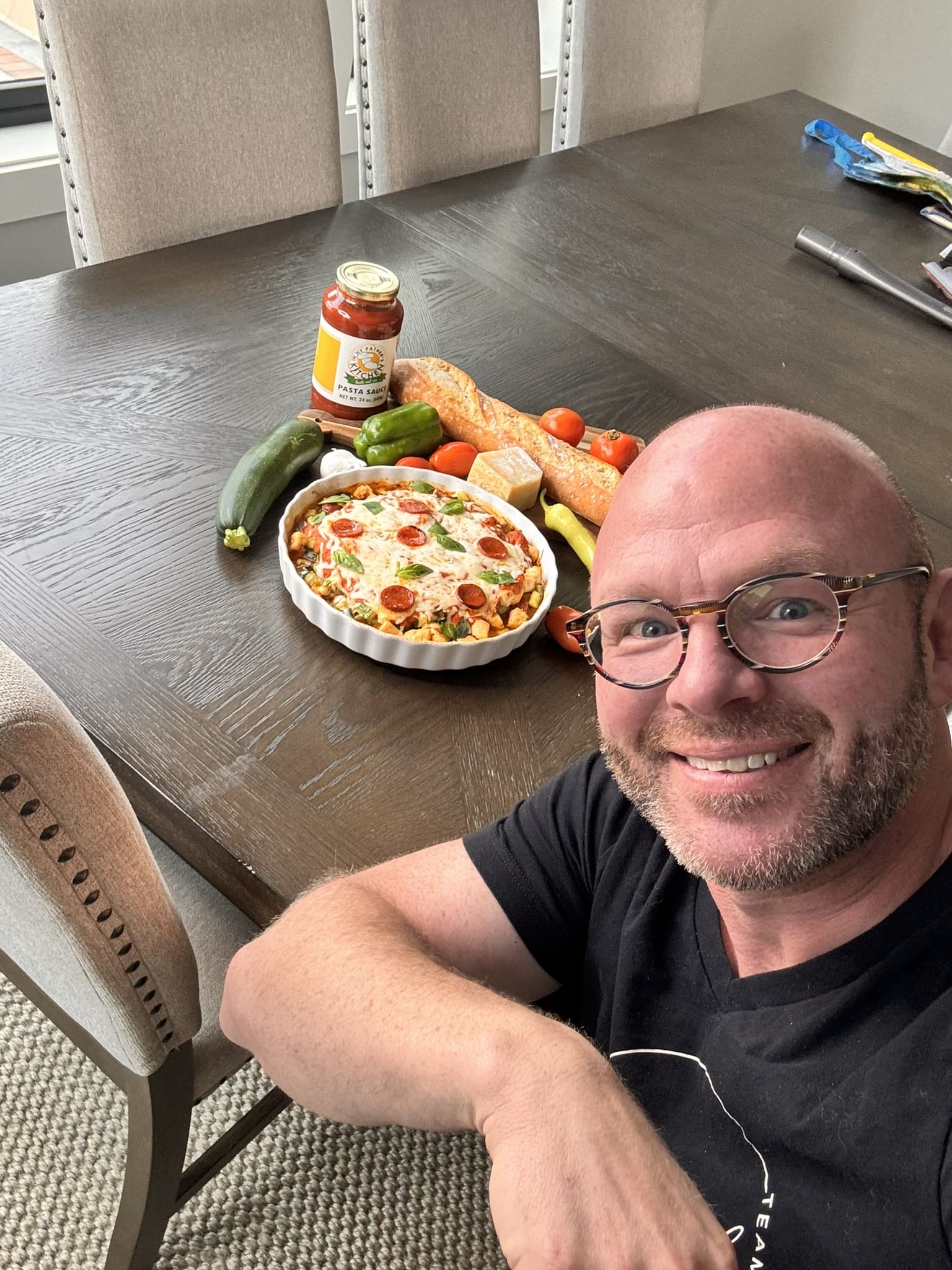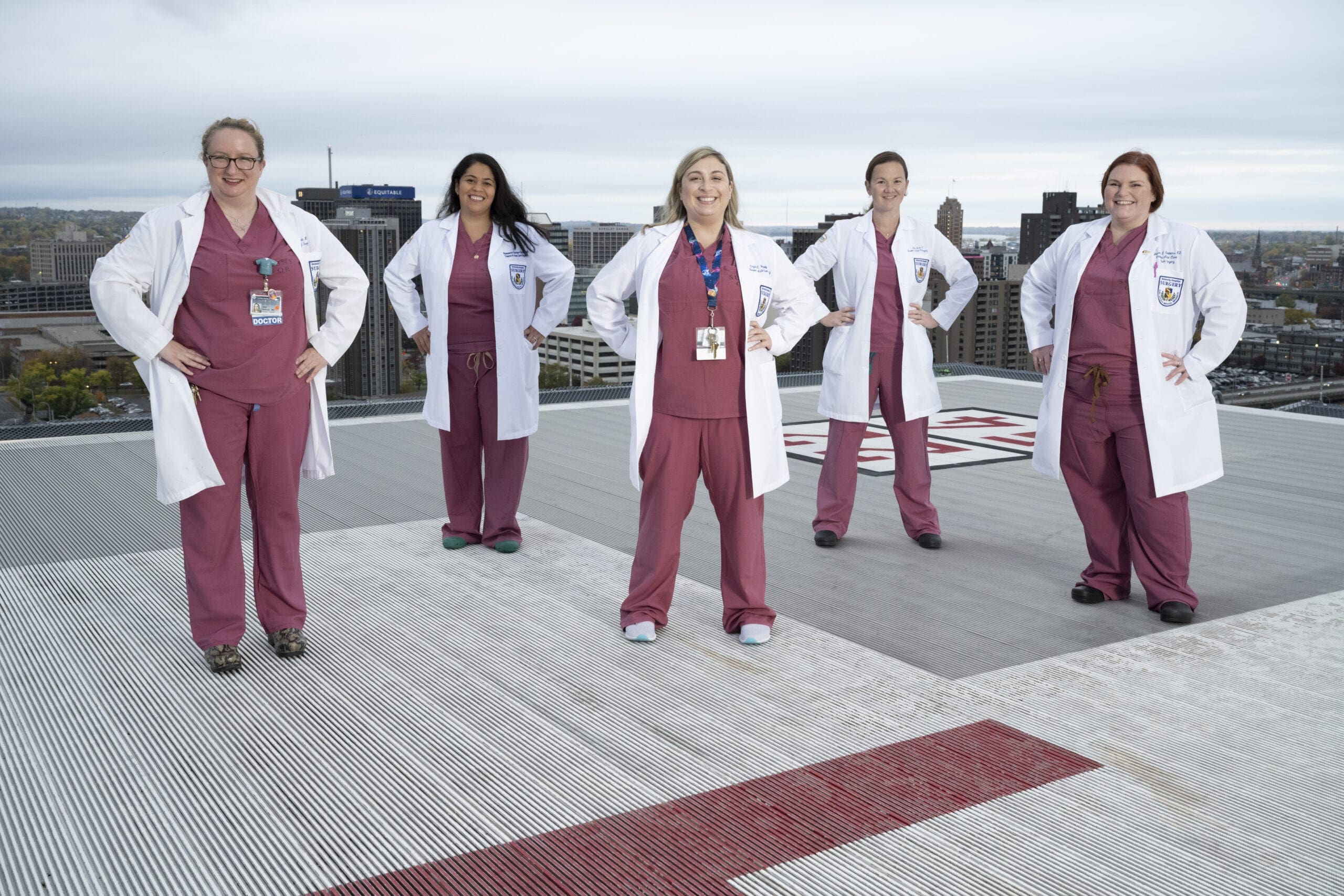Imprinting Hope
By Lorna Oppedisano | Photography by Alice G. Patterson
Nicole Watts was angry. Since her teenage years, she’d felt a calling toward “diverse, urban community development,” but couldn’t pinpoint exactly what that calling would entail. And then, in the midst of what she referred to as a “very angry prayer,” she had a vision of what would evolve into Hopeprint, a locally-based organization aimed at empowering resettled refugees to thrive.
She saw herself on a street in an economically struggling neighborhood in the middle of the road, in the midst of some sort of parade.
“And the whole street was filled, as far as my eye could see, with people from every corner of the globe — like the whole world in one place,” Nicole said. “And I was towards the back of this really huge parade, the only person who looked like me. And my face was glowing with that look of, ‘This is where life is. This is the thing I’ve been looking for.’”
Other people who seemed to have been from a similar context as Nicole were watching from the sidelines, and she motioned for them to join.
“Get in here,” she said to them. “This is where life is. This is exciting. Participate.”
Starting the journey
Hopeprint’s roots run deep, to when Nicole was 14 years old. Spending the majority of her childhood in Virginia and Colorado, she knew from a young age she was a natural-born leader.
Then, at age 14, a service trip to the heart of Chicago exposed her for the first time to “what the faces of poverty look like — the names and the people and the stories,” she said. It ignited something in her, she explained — a holy anger and need for justice. Seeing children about her age with such a severe lack of access to opportunities she might take for granted left a mark.
“That’s something that continues to always hit me upside the head,” Nicole said, “that too many children who are raised in an impoverished context are not given the opportunity to witness or even dream beyond what they know.”
She decided she’d go to college to earn a degree in urban studies, and do what she could to help the children.
“I’ll just love kids until their lives are changed,” Nicole thought.
So, she followed that path, and it led her to a neighborhood in the heart of Chicago. It happened to be election season. While she was visiting with the children, some of their mothers asked her about who she’d be voting for and why. The conversation was about so much more than politics, Nicole remembered. No one had really questioned her “why” before, she explained.
“I realized I had no idea what to do to really address the problem,” she said. “And I think within a few months, I became very aware that just being a person who showed up and loved and hugged kids was not actually going to address the issue.”

Finding family
Nicole switched majors, and graduated with a youth ministry degree instead. Finding a leadership role as a woman in that field can be difficult, Nicole explained; so, when she was offered a job in Manlius at Eastern Hills Bible Church, she welcomed the opportunity. The position started as a nine-month-long internship, but eventually Nicole was ordained, and served as a minister for 11 years.
Nicole still felt a tug in her heart toward the fight for justice. But each time she did, it was accompanied with a feeling of, “not yet, not yet,” she remembered.
In early 2009, Nicole was traveling between Syracuse and Chicago, where she was taking classes. Having associated the sense of calling with Chicago, she was also looking for jobs in that area.
As time passed, and plans to move fell through, Nicole got angry. Here she was, knowing she had a calling to fulfill, without any inkling of how to do it.
Then she had the vision. But, despite its clarity — “It was as if someone had just put a painting right in front of my face,” she remembered — the future was still murky. She wondered, where could she find the world all in one place — the United Nations? No, she thought, that’s not it.
Soon after the vision, Nicole began to learn more about refugee resettlement.
“Huh, well, this is like people from a bunch of different countries all living in one place,” she thought.
After looking into it, she realized Syracuse had a strong refugee resettlement culture. Through friends, she began to connect with the community. Meeting one refugee family after another, Nicole learned more about the systems of refugee resettlement, and local organizations that facilitated them, InterFaith Works and Catholic Charities. According to a woman familiar with the system at that point, by 2009, about 10,000 refugees had been resettled in Syracuse, Nicole remembered. With the exception of this year, between 700 and 1,300 refugees are resettled in the Syracuse area each year. It’s “a pretty significant influx,” Nicole said, adding many of them settle on the Northside.
As they began to welcome her into their homes, Nicole’s connections with the refugee community grew.
“So, I was drinking tea, and eating way too much food,” she said with a laugh, “and falling absolutely in love with these friends from all around the world.”
Nicole’s family lives in Atlanta, so her new friends soon became a surrogate family. And while she got to know them, she noticed she was making a difference in their lives, too. It wasn’t any grandiose gestures or huge expenditures on her part, she explained. It was just simple things, like helping sort mail or figuring out where to buy school supplies.
“I was just being a friend and being present in their lives,” she said.
Finding her hopeprint
About a year later, Nicole found herself spending a lot of time with her new family, and then making the commute back to Manlius each night. She wanted to have her friends over to her home, but transportation from across the city was complicated.
She decided to move to the Northside, but not until she could find at least one person to move with her. To relocate alone would set her up for burnout, she explained.
“One of the biggest things that happens in these communities is well-intending people move in and they pour their lives out. They burn out. And then, they ultimately end up hurting the people who they were there to love and help,” Nicole said, “because they disappear out of their lives — because they have the option to disappear.”
So, she found one person willing to make the leap with her and found a house. A few more people moved in with them, and they all lived like a family, with their extended family of refugee families around them.
For the next year and a half, Nicole and her new family lived a “crazy, full life,” she remembered with a smile. Dozens of people joined them for dinner each night. They held impromptu college prep classes. They saw a need for after-school care and created a program. They realized someone needed to learn English, so a bedroom transformed into a classroom. Every space in the house was utilized.
“Our home was just this beating heart in the neighborhood,” she said.
When Nicole and her family moved into the house on the Northside, they began using the name Hopeprint. The word comes from the belief that “every single individual has a unique ability to imprint the world with hope and with who they are and their uniqueness,” she explained.
“We’re all better when people are able to live into their fullest sense of their own uniqueness,” Nicole said. “So, Hopeprint is indicative of this idea that justice is a fingerprint.”
Whether someone is American-born or a refugee, they have a hopeprint, Nicole explained, adding that quite often, it gets covered up with rubble. For some, it’s the rubble of war and trauma, she said; for others, it’s that of wealth and indifference.
“In many cases, we need to dust it off,” she said.

The mission
As Hopeprint evolved, Nicole and her neighborhood family realized they would need more space, and eventually expanded into two other houses on the same street in the Northside.
The organization’s programming evolved as the needs of the refugee community changed. At Hopeprint’s founding, it was hard to find an English as a second language class, so volunteers provided them. Now, as more community resources offer the classes, Hopeprint can point refugees in that direction, and focus its own programming elsewhere.
One of Hopeprint’s key programs, Her Village, was developed to meet a need for a community support system among mothers.
“Most are used to living in a village or highly relational context, where there were people around all the time,” Nicole said. “Parenting is different. Marriage is different. Everything’s different.”
From the unfamiliarity can spring loneliness and depression, she explained. So, Her Village is a means to foster relationships between mothers, hopefully building a network of friends in their neighborhood.
Along with ever-evolving programming, the team at Hopeprint aims to impact policies and structures affecting the refugee community.
“We do not live under a rock,” Nicole said. “We realize that power lies in certain places and that it lies among some of us who are part of this family, and that it is part of our task that we must leverage that power towards equity.”
To do this means to show up in conversations, she explained. Most of the discussions that ultimately impact the community happen around big conference tables, she said. The goal, Nicole explained, is to reserve a seat and culturally equip members of the resettled refugee population to take those seats as the expert leaders they can be for their own families and communities.
These conversations center around community collaboration. Hopeprint is working with a number of community organizations — including InterFaith Works, Catholic Charities, Northside Learning Center, RISE, SCSD Refugee Assistance Program, CNY Fair Housing, CenterState CEO Economic Inclusion, the Gifford Foundation, CNY Community Foundation, Onondaga County and the city of Syracuse — on the Refugee Alliance. The alliance has a mission to “gather key influencers towards collective impact in our city’s resettled refugee communities, and neighborhoods where they live,” according to Hopeprint’s website.
The Hopeprint team also aims to be present at neighborhood meetings. While Hopeprint’s mission focuses on the refugee community, Nicole realizes they’re not the only members of the Northside affected by issues like racial inequality and economic opportunity and inclusion.
“To create equitable situations for New Americans at the loss of our American-born, most especially those who have been silenced or unheard for years, is to our detriment,” she explained. “All those voices have to be brought up together.”
In January 2016, Nicole became Hopeprint’s first — and, so far, only — full-time staff member, with the help of funding from a friend’s family foundation. It’s given Nicole the opportunity to focus leadership energy on policy conversations and meetings, as well as a fresh perspective to strategically manage volunteer resources, she explained.
Now, Hopeprint employs five part-time staff members, and is helped by a team of more than 100 volunteers, ranging from high school students to college interns to professionals.
“They come from everywhere, but one of the biggest ways we get people are other team members,” Nicole said. “Our volunteers are part of the family. They catch it. And so, they start talking about it, and then their friends want to participate, and then they bring them down. So, our highest way that we get people is just word of mouth.”

A hope-filled future
Hopeprint has evolved organically since its inception in 2010, and it’s only the beginning. Along with the local conversations, Nicole stays tuned in with national discussions, as well.
“As we show up in those conferences and in those spaces and interact with other communities, we repeatedly hear, ‘I wish our city had something like that,’ about Hopeprint,” she said. “So, after several years of hearing that, I went, ‘Well, there’s no reason why your city can’t have Hopeprint.’”
In some places, that means connecting with organizations that have similar missions. Or, in other cases, it could mean coming alongside resettled refugees in those other communities, like Nicole did in Syracuse. She’d like to eventually see a network of Hopeprint-like organizations throughout the country. The first of those sister Hopeprint programs is slated for Kansas City later this year.
The ultimate goal isn’t to establish a million Hopeprints, Nicole said.
“The point is that we want every community to have this for the families that are moving in. In order to do that, we’ve had to figure out what our DNA is,” she said, explaining that at its core, Hopeprint doesn’t necessarily equate to a residential house on Syracuse’s Northside. “What it means is spaces of hospitality with people who have the posture of mutual mentorship with an orientation and intentionality around community collaboration — all towards empowering these new members of our community to thrive.” SWM
For more information on Hopeprint, visit hopeprint.org.






You must be logged in to post a comment.